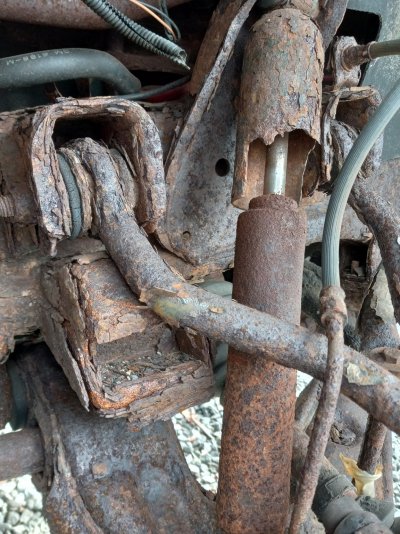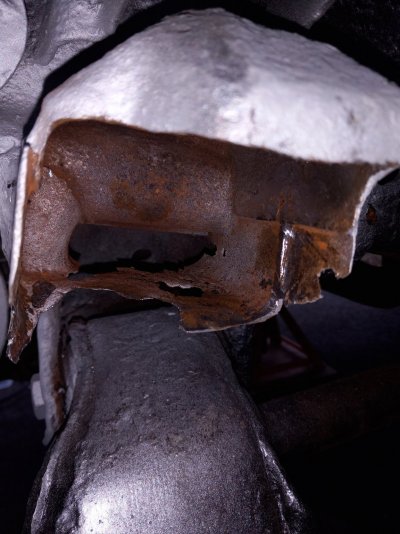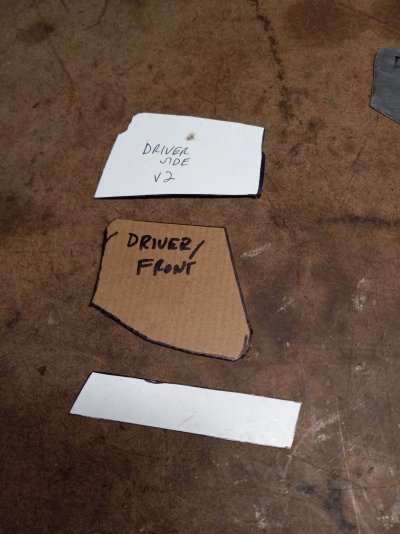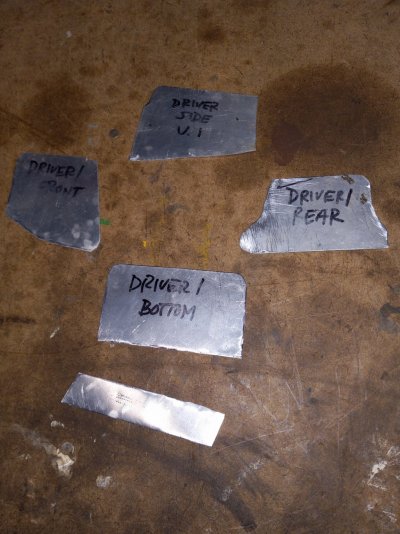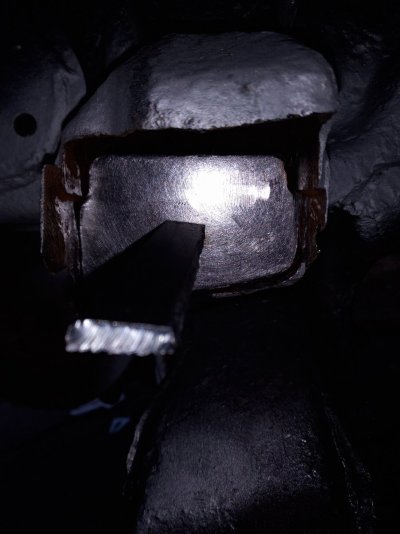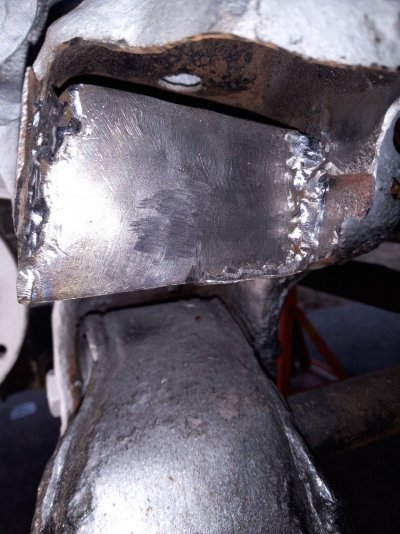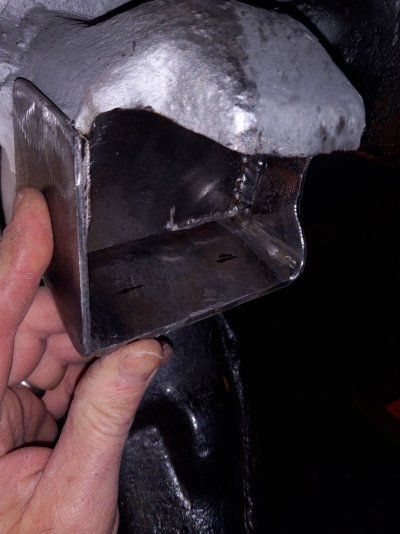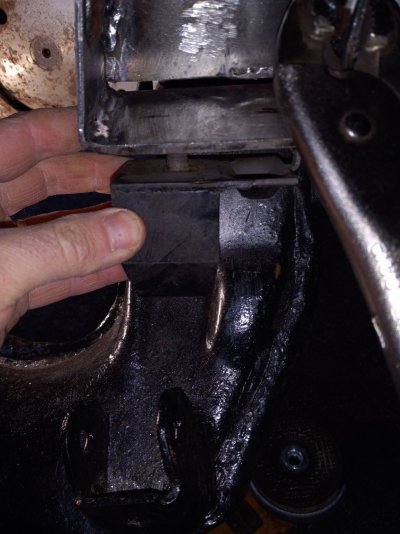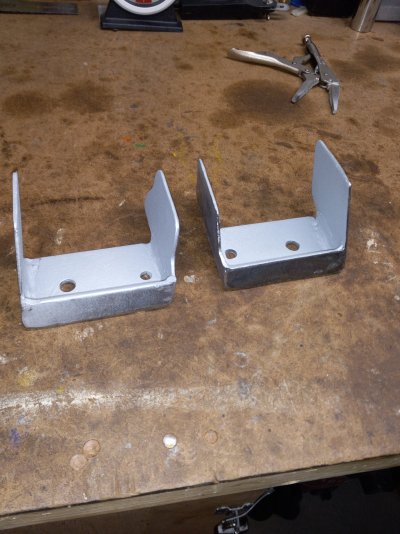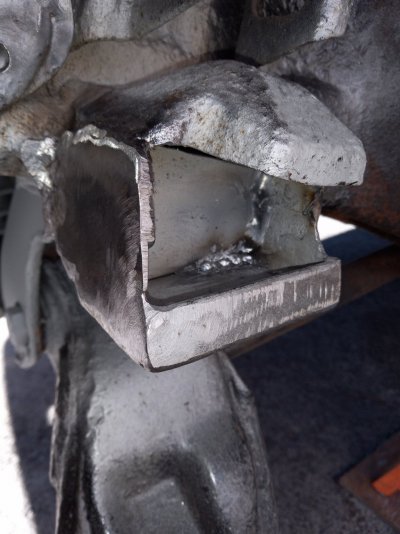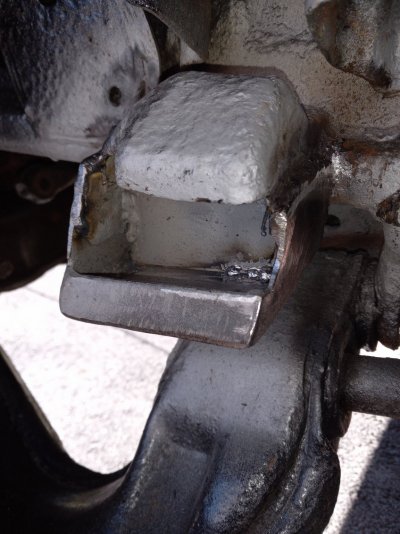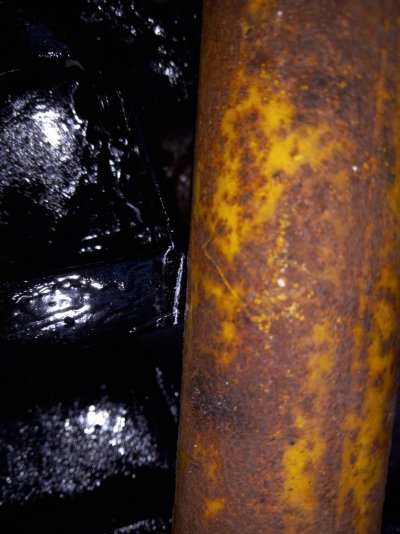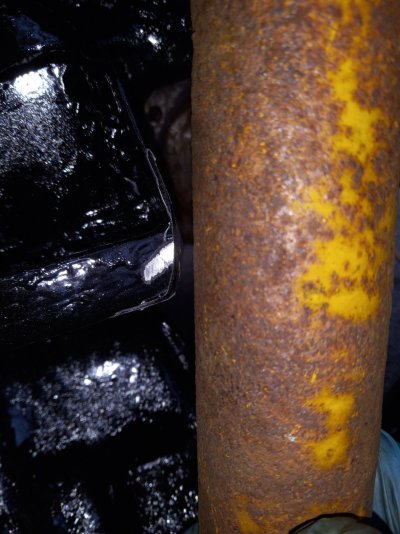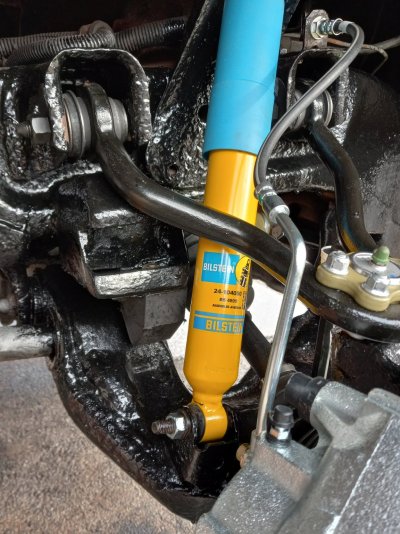Kens1990K2500
One Piece At A Time
I’m writing to share my experience on an issue with GMT400 trucks in the Rust Belt. Although it’s a common issue, there’s very little information about it. Maybe because it’s not a critical component, it’s probably something few people think about. I’m talking about … the front suspension rubber bump stop for the lower control arm.
Most GMT400s I’ve seen in the salvage yard are missing them because they rot off (the photo posted below - not my truck - is an extreme example).
The bump stops consist of a metal plate with a stud, which bolts onto a bracket, which is welded to the frame. In some cases, part of the bracket has rotted away. (The top part of the bracket, whichis where the upper control arm rests when the truck is raised off the ground, is almost always solid, however.)
The bottom part of the bracket tends to rot because it collects dirt/road salt/water (almost like a little pool). Like many trucks, the bottom part of my brackets were rotted, so there was nothing solid to mount a new bump stop to. So, metal fabrication and welding is the only solution.
I needed to rebuild the front suspension in my 1990 truck, which had all original ball joints, some of which were very loose and clunky. Once I removed all the worn parts, I decided to repair the bump stop brackets while they were at their most accessible. Some people (most people?) wouldn’t bother, but I’m kind of OCD. Besides, I had bought a Hobart 140 Mig welder and was anxious to use it.
<Note: This will be continued in subsequent, multiple posts or responses, because this is a graphics-heavy write-up, and I can only post five photos per response/post. I'm not sure if there is a better way to format this; please excuse my awkwardness, I am not the most computer literate person.>
Most GMT400s I’ve seen in the salvage yard are missing them because they rot off (the photo posted below - not my truck - is an extreme example).
The bump stops consist of a metal plate with a stud, which bolts onto a bracket, which is welded to the frame. In some cases, part of the bracket has rotted away. (The top part of the bracket, whichis where the upper control arm rests when the truck is raised off the ground, is almost always solid, however.)
The bottom part of the bracket tends to rot because it collects dirt/road salt/water (almost like a little pool). Like many trucks, the bottom part of my brackets were rotted, so there was nothing solid to mount a new bump stop to. So, metal fabrication and welding is the only solution.
I needed to rebuild the front suspension in my 1990 truck, which had all original ball joints, some of which were very loose and clunky. Once I removed all the worn parts, I decided to repair the bump stop brackets while they were at their most accessible. Some people (most people?) wouldn’t bother, but I’m kind of OCD. Besides, I had bought a Hobart 140 Mig welder and was anxious to use it.
<Note: This will be continued in subsequent, multiple posts or responses, because this is a graphics-heavy write-up, and I can only post five photos per response/post. I'm not sure if there is a better way to format this; please excuse my awkwardness, I am not the most computer literate person.>


